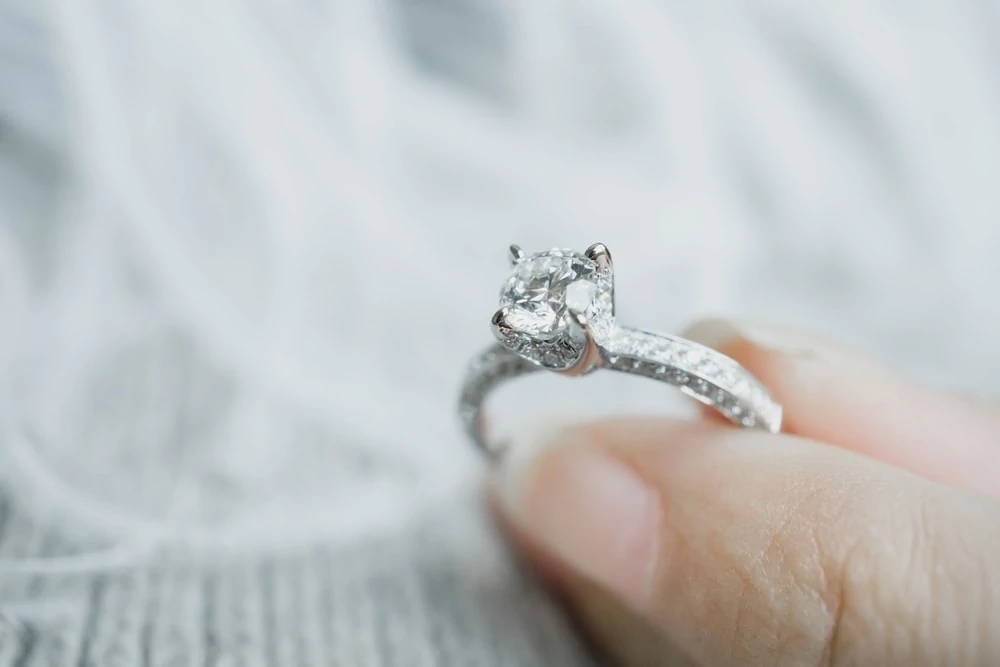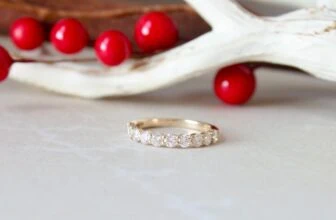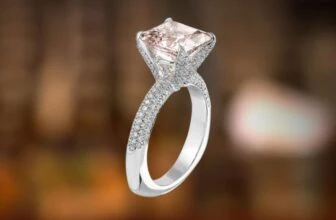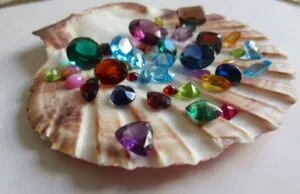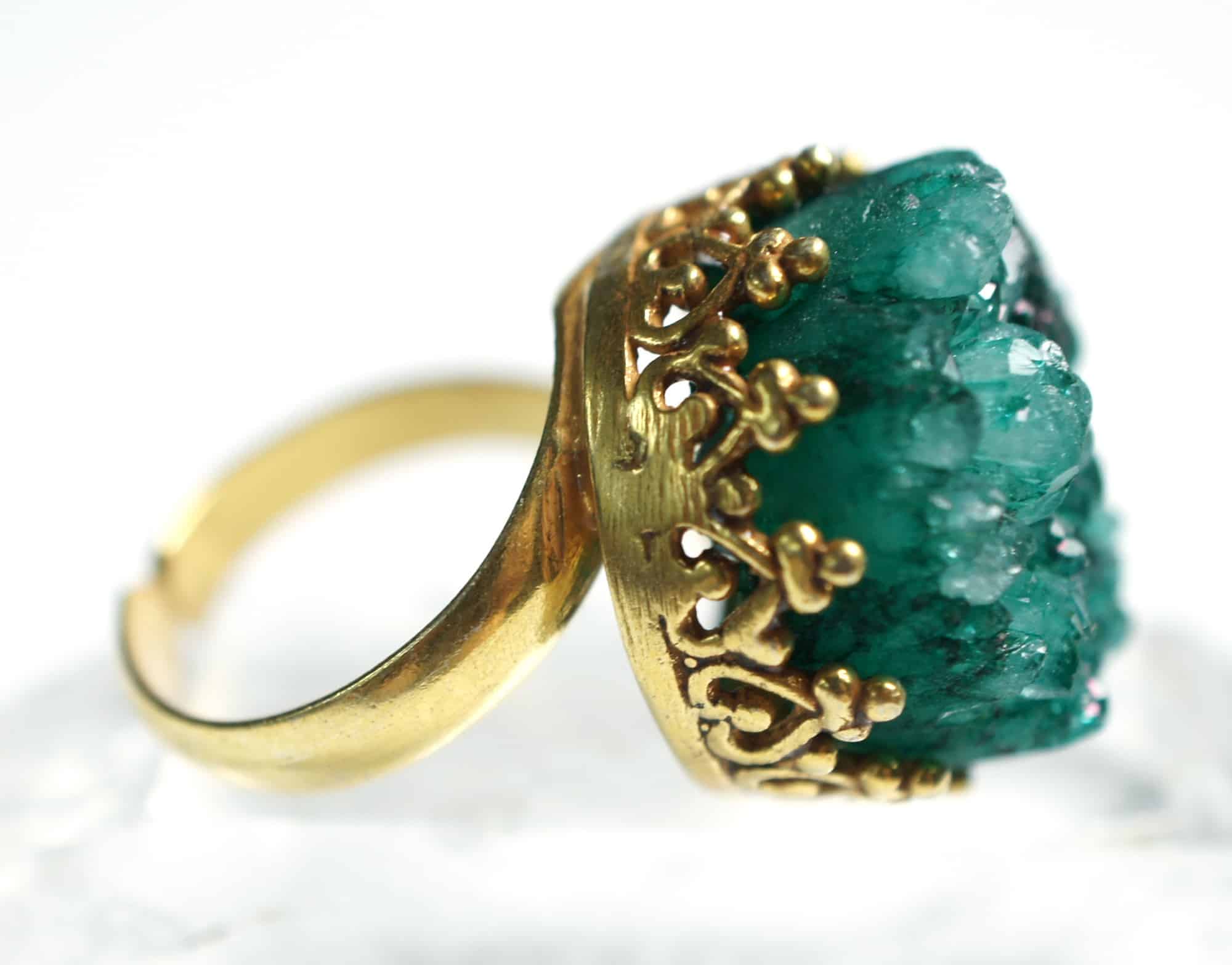
Table of Contents
Green engagement rings are unique, sophisticated, and elegant. They’re not a conventional choice, as most people opt for either colorless or blue engagement rings.
If you decide you want a green ring, the main question to ask is: Which gemstone do I choose? There are several quintessentially green gemstones, such as emerald and peridot, but how do they fare in engagement rings?
The main consideration when choosing a gemstone for your engagement ring is how it will hold up after years of wear. If you plan on wearing your ring daily and not only on special occasions, then durability is a primary concern.
Here we outline green gemstones that are perfect for engagement rings, as well as stones to wear with care.
1. Best Green Gemstones for Engagement Rings
Green Diamond
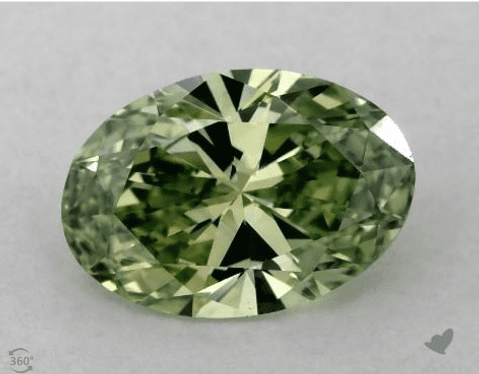
One of the best green gemstones for an engagement ring is the green diamond. Although green diamonds are very expensive, they are extremely durable with a hardness rating of 10, scratch resistant, valuable and rare.
Green diamonds come in a variety of shades, with secondary tones of yellow, brown, or blue. Because blue diamonds are also exceedingly rare, green diamonds with blue secondary tones are very pricey, while brown or yellow secondary tones in a green diamond can bring the price down. In terms of intensity, paler green diamonds are much less expensive than vivid gemstones, all else being equal.
A little green diamond can go a long way, so an option would be to choose a small stone and have it set expertly in a beautiful setting that accentuates its look. Setting a green diamond in a diamond halo adds brilliance and makes the stone look bigger.
Another option is to purchase a synthetic green diamond. While it may be harder to find a synthetic green diamond, these stones can be up to 90% cheaper than the real thing. Bear in mind that while a lab-created diamond is a green diamond and not a fake stone, the resale value is often very low.
Green Sapphire
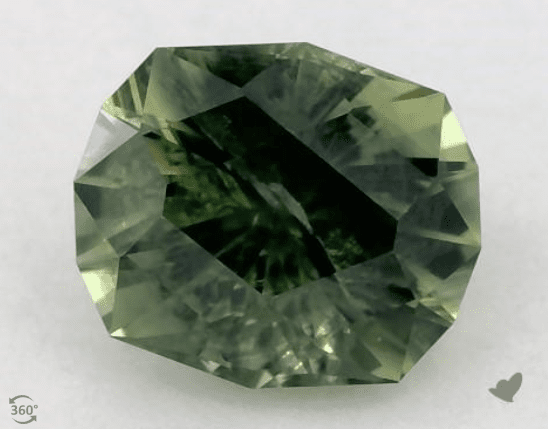
Sapphires are highly durable, very beautiful, and can be worn on a daily basis. As such, a green sapphire makes a very good choice for an engagement ring. They are also much less expensive than green diamonds even though they are quite rare in nature.
Like green diamonds, green sapphires come in a variety of shades too. Many stones have secondary tones of blue. When set in the right ring setting, a green sapphire can look stunning.
For a vintage, classic look, choose yellow or rose gold. This makes the ring even more eye-catching and very unique. A silver-hued metal such as white gold or platinum gives a modern edge to the ring and the contrast between the green and the silver is more pronounced, accentuating the color of the stone.
Like green diamonds, there are synthetic green sapphires available at low prices. However, natural green sapphires are relatively affordable and unless you wanted an extremely affordable ring, we suggest going for a natural stone.
2. Green Gemstones to Wear With Care
Emeralds
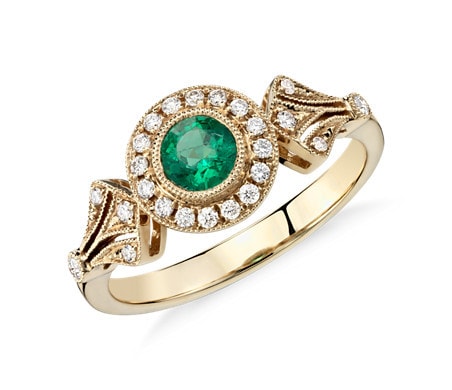
Say green gemstone and most people immediately think of emeralds. Emeralds are the quintessential green stone and the color they have is quite hard to find in any other stone.
The problem with emeralds is that they are quite fragile. Although they rank at 7.5 to 8 on the Mohs scale, meaning that they are quite hard, the issue is that most emeralds have lots of inclusions (called jardin in the gemstone industry).
These inclusions can compromise the stability and integrity of the stone, making it more likely to chip and crack when exposed. Emeralds are also often treated for color and clarity enhancement, which can make it difficult to identify how fragile the stone really is.
A good way of incorporating emeralds into the overall design is to use them as accent stones. For example, consider a central diamond surrounded by a halo of little emeralds or alternatively flanked by two emeralds. If you decide on an emerald engagement ring, choose a protective setting like a halo or bezel.
It’s also advisable not to wear the ring frequently or when engaging in strenuous activities. Over time, treated emeralds, especially heavily oiled stones, can fade and look degraded. Because emeralds are almost always enhanced, it’s not important to ask if the emerald has been treated but rather to what extent it’s been treated.
Other Green Stones
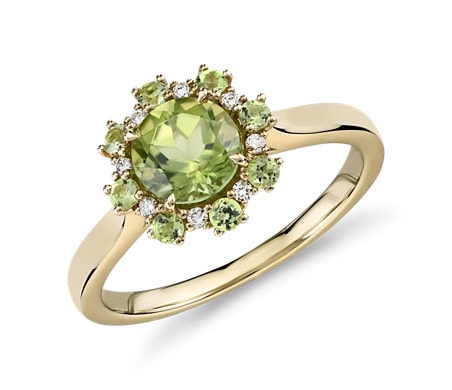
Other green stones such as peridot, green topaz, and tsavorite garnets have distinct green hues and are beautiful to wear in engagement rings. However, these are not durable enough for daily exposure and will most likely crack, chip, break or fade over time.
Having said that, there are people who make these gemstones work as engagement ring center stones. By giving the stone the appropriate care it requires, having it set in a protective setting, and overall being mindful of it when engaging in rough activities can prolong its life.
Wrapping Up
Green gemstones are a nice way to make an engagement ring stand out, while still following the tradition of wearing engagement rings. Not every gemstone is perfect for daily wear, which is why most jewelers only recommend green diamond or sapphire (and their synthetic versions).
If you decide to choose a different gemstone, appropriate care and maintenance can ensure that it lasts for a lifetime. Check out our article listing the 16 best green gemstones used in jewelry for more information.


